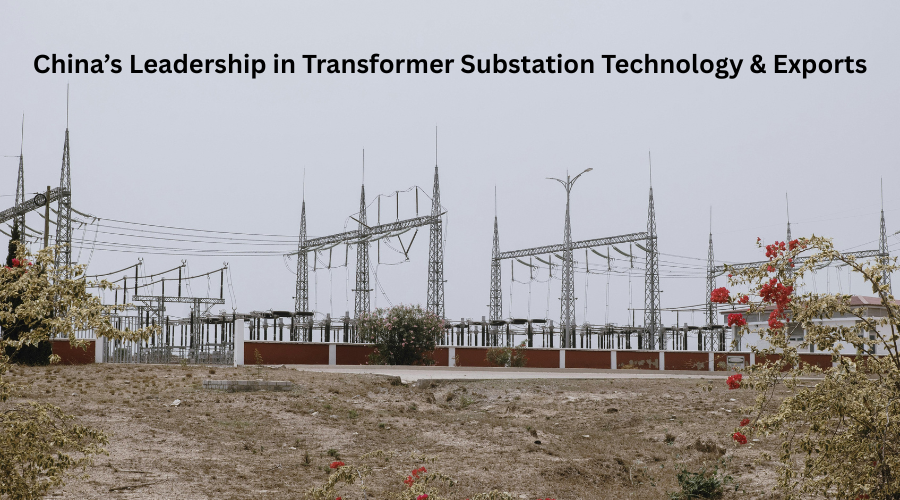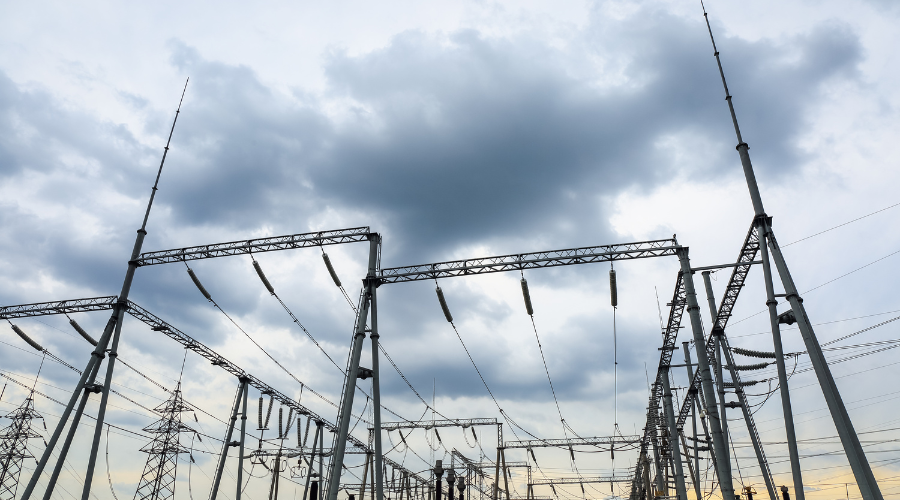China’s Leadership in Transformer Substation Technology & Exports
- dsjenergyl
- Aug 11
- 4 min read

In recent years, China transformer Substation technology has emerged as a global benchmark for innovation, efficiency, and reliability. As the world increasingly demands stable and sustainable power distribution, China has positioned itself not only as a technological leader but also as a dominant exporter in the transformer substation industry. This rapid growth is powered by innovation in engineering, manufacturing expertise, and a forward-looking approach to renewable energy integration.
Understanding Transformer Substations
A transformer substation is a critical part of the power grid, responsible for stepping up or stepping down voltage for safe and efficient electricity transmission. Without these substations, power distribution over long distances would suffer from losses, instability, and inefficiency.
China has invested heavily in modern substation designs that not only meet universal safety and quality standards but also incorporate cutting-edge digital monitoring systems. This ensures high efficiency, lower maintenance costs, and improved operational reliability.
Why China Leads in Transformer Substation Innovation
China’s dominance in this sector isn’t accidental—it’s the result of decades of industrial growth, research, and investment. Some of the core reasons include:
Advanced Manufacturing Capabilities – Chinese companies leverage state-of-the-art factories with automation, robotics, and precision engineering to produce high-quality transformer components.
Mass Production Efficiency – Large-scale production reduces costs without compromising on performance, making Chinese substations competitive globally.
R&D Investment – China allocates substantial budgets to research, driving innovations in smart grid integration and renewable energy compatibility.
Strong Export Infrastructure – With well-developed shipping, logistics, and trade agreements, China can deliver substations quickly and reliably to markets around the world.
Global Export Influence
China’s transformer substations are now found across Asia, Africa, Europe, and South America, powering industries, cities, and rural communities. This global reach is fueled by:
Competitive Pricing – Offering world-class technology at affordable rates.
Custom Engineering Solutions – Tailoring substation designs to meet the specific operational needs of each country.
After-Sales Support – Providing training programs, spare parts, and maintenance services to ensure long-term operation.
Many developing nations see China as their go-to partner for infrastructure projects because of its turnkey solutions—covering design, manufacturing, delivery, and installation.

Technological Advancements in Chinese Transformer Substations
Chinese manufacturers are pushing the boundaries of substation technology through several innovations:
Digital Control Systems – Integrating IoT-enabled sensors for real-time monitoring and predictive maintenance.
Eco-Friendly Designs – Using biodegradable insulating fluids and recyclable materials to meet green energy goals.
Compact Modular Designs – Space-saving substations that are quick to assemble and easy to maintain.
High Voltage Direct Current (HVDC) Compatibility – Allowing more efficient long-distance power transmission.
These advancements not only boost efficiency but also future-proof power infrastructure for the next generation.
China’s Role in Renewable Energy Integration
As countries transition toward solar, wind, and hydropower, transformer substations must adapt to manage variable energy flows. China has taken a leadership role by:
Designing smart substations capable of integrating with renewable sources.
Developing energy storage-compatible substations to handle fluctuations in supply and demand.
Exporting these solutions to regions that are building green energy grids from scratch.
This adaptability has made China a preferred partner for governments seeking sustainable development.
Challenges and How China Overcomes Them
While China dominates the market, it faces challenges such as:
Meeting diverse regulatory standards across countries.
Ensuring cybersecurity for digital substations.
Maintaining quality consistency across large export volumes.
To overcome these, Chinese companies are establishing local partnerships, investing in AI-based quality control systems, and upgrading cybersecurity protocols to protect critical infrastructure.
Economic Impact of Transformer Substation Exports
The export of transformer substations contributes significantly to China’s GDP and strengthens trade relationships. By exporting high-value, technology-driven products, China shifts from being seen purely as a low-cost manufacturer to a global technology powerhouse.
This has ripple effects:
Job creation in engineering, manufacturing, and logistics.
Boosting allied industries such as steel, electronics, and power system software.
Strengthening diplomatic ties through infrastructure support.
Future Outlook for China’s Transformer Substation Industry
The future looks bright for China’s substation industry as trends like electrification of transportation, urban expansion, and off-grid renewable projects create demand worldwide.
We can expect:
More AI integration for autonomous operation and fault detection.
Expansion into smart microgrids for remote areas.
Sustainable materials and zero-emission manufacturing processes.
China’s commitment to technological excellence ensures it will remain an industry leader well into the future.
Conclusion
China’s leadership in transformer substation technology and exports is built on a basis of innovation, affordability, and adaptability. By combining cutting-edge engineering with global market understanding, China has set a new standard in the power industry. Whether supporting a growing city, a rural electrification project, or a renewable energy farm, Chinese transformer substations are powering the world with reliability and efficiency.
FAQs
Q1: Why are Chinese transformer substations so popular globally?
They offer a combination of advanced technology, cost-effective pricing, and individualized solutions that meet the unique requirements of each country.
Q2: Are Chinese transformer substations compatible with renewable energy?
Yes, modern designs are fully capable of integrating with solar, wind, and hydropower systems.
Q3: How does China ensure quality in its exported substations?
Through comprehensive testing, adherence to international standards, and investment in AI-driven quality control.
Q4: What is the lifespan of a transformer substation from China?
With proper maintenance, many last 25 to 40 years, depending on environmental conditions and usage.
Q5: Which regions import the most from China?
Major markets include Asia, Africa, Latin America, and parts of Europe due to their infrastructure development needs.







Comments